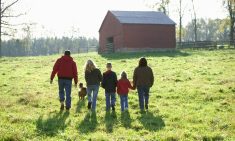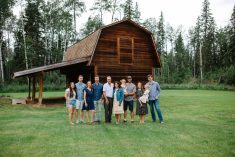Are you getting more and more convinced that it’s time for succession planning for your own farm? If so, here are some thoughts from the experts on how to get started, beginning with the most important question of all:
What does our retirement look like?
“The retiring couple has to have a focused discussion on what retirement really means to them,” says Terry Betker of Backswath Management. “This means the when, how and what of retirement… their vision of retirement.”
Betker goes on to say that most couples don’t actually have this sort of deep, detailed discussion and can sometimes find that when they do, they have very different views of what their retirement years will look like. “An ironclad plan is not critical at this point,” says Betker. “But this is an essential first step to take before involving the rest of the family in the process of succession.”
Read Also

Farmland values: assumptions and realities
Where farmland values are headed and what decisions farmers should make
Bring the family together
Once mom and Dad have talked about retirement and are on the same page, it’s time to have a family meeting. “What’s important with this meeting is the purpose and the attendees,” says Betker. “All the children, and their spouses, should be at this meeting so everyone hears everything together. One-on-one meetings are not advisable at this stage of the process.”
“This first meeting is an exploration of what everyone’s goals are,” says Len Davies of Davies Legacy planning Group. “By airing these aspirations to the group, there is less likelihood of making assumptions and causing family arguments later on.”
At the end of this meeting, the goal is to have some timelines, some expectations and some actions to follow up for the next meeting date, which also should be an outcome of this gathering.
Introduce accountability into the process
At this point, the family should try to introduce some accountability into its succession process. “There are two easy ways to do this,” says Betker. “Either hire a facilitator who can help the family drive the process and keep it on track, or be rigorous about scheduling the next meeting date after each meeting.” By doing this, the process will be more likely to stay on track and on the schedule that has been agreed to by the family.
Financial performance
At some point early on in the process, the family needs to understand what succession is going to mean for the financial performance of both the farm and the retiring generation. This is another area where experienced professionals can play an important role in analysis and advice. “This is also the time to look critically at the strengths and weaknesses of the business,” says Davies. “It also will unearth challenges the farm faces and what has to be done to prepare for the succession to be successful.”
Seek out tools and resources
“Every provincial government ag website is loaded with resources on farm succession,” says Betker. “So, too, are organizations like Farm Credit Canada and others.” While some may see these resources as overwhelming, they can be very helpful in enabling discussions through the use of the questionnaires and surveys they contain.
“If I had only one thing to advise farm families about succession, it would be the sooner the better,” says Davies in conclusion. “By creating a road map to succession with as much lead time as possible, the family can figure out how to service its debt, fund retirement and still grow the business.”














